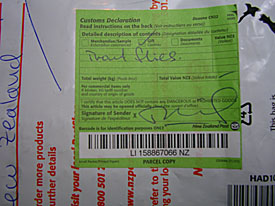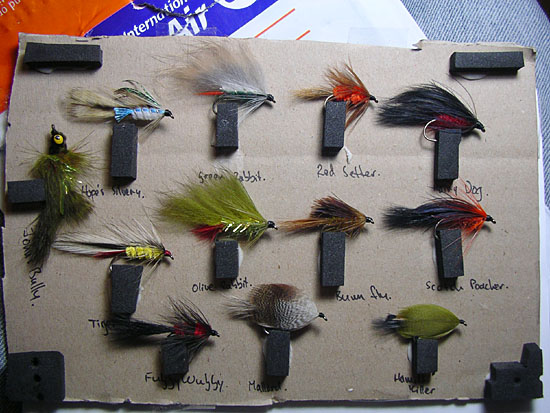|
During the
fall I posted a question about the Matuka streamer on the
Fly Fisherman Bulletin Board. John (Johnno) Nicholls
of New Zealand replied with some excellent information, right from the horse's
mouth. You see, the Matuka was originated in his country. I learned from him that the
original name was the Matuku, as this is the name of the
bird from whose feathers the first flies were tied. He
informed me that these birds are currently endangered and the use
of their feathers is now banned. For no known reason,
over the years the common name for this fly changed from
Matuku to Matuka, and today it is even called that by
most New
Zealanders.
When I observed that the hooks on his flies
were shorter than I expected for streamers, Johnno pointed out
that New Zealand streamers (lures,
as they are called there) started out on standard trout hooks because
that was all that was available. He estimates that 95%
of the streamers tied in New Zealand are done so on regular
length hooks. The Mustad 3666 is the standard choice. The fly
"arrived" in American in the 60's and 70's where
the hook length increased. In American, most streamers are
tied on long hooks, such as 3xl, 4xl and even longer. The
4xl Mustad 79580 is perhaps "the" classic streamer hook.
A quick look on the Orvis Web site finds that a 4xl hook is specified
for the Matuka, in a size 6 or 8.
Johnno's
favorite lure size is a size 6, though size 4 and size 8 are
common in his fly boxes. Because of the shorter shank of
the 3666, it would therefore seem to me that smaller
streamers are fished in New Zealand. Perhaps I am
erroneously jumping to a conclusion.
Offline, I emailed Johnno several times with
additional questions, and he was very helpful and generous
with his responses. Because the lures used in New Zealand
are quite different from our standard fare, I was able to
coax (it wasn't hard!) Johnno into sending a few flies for
fishingwithflies.com.
I was so surprised and pleased
when I received by air mail a dozen beautiful lures with
historical information and recipes included! In
addition to several Matuka/Matuku style flies,
he sent multiple samples of several other styles of lures:
Killer, Pukeko, and Hackle
styles.
Here are some terms used by Johnno and what
they mean to North Americans:
 |
 |
|
Johnno's
flies
survive customs and arrive in Massachusetts in
perfect condition! |
My plan is
to photograph each of the twelve flies, and add them to
this site along with
recipes and historical background, as provided by Johnno. I expect to
divide the project into four parts, with a separate
Web page for each part:
---Peter Frailey
January, 2006 |